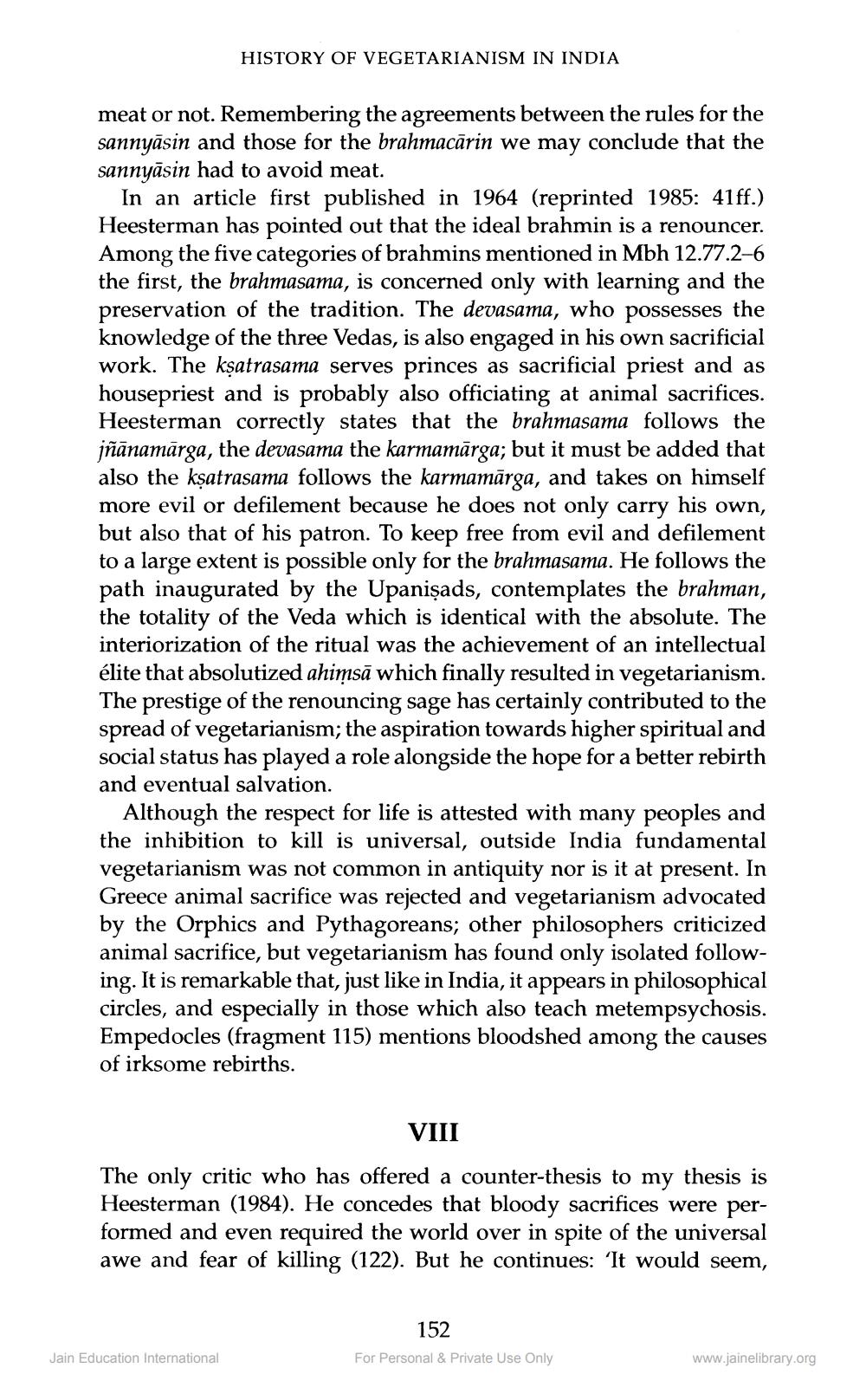________________
HISTORY OF VEGETARIANISM IN INDIA
meat or not. Remembering the agreements between the rules for the sannyāsin and those for the brahmacārin we may conclude that the sannyāsin had to avoid meat.
In an article first published in 1964 (reprinted 1985: 41ff.) Heesterman has pointed out that the ideal brahmin is a renouncer. Among the five categories of brahmins mentioned in Mbh 12.77.2–6 the first, the brahmasama, is concerned only with learning and the preservation of the tradition. The devasama, who possesses the knowledge of the three Vedas, is also engaged in his own sacrificial work. The kşatrasama serves princes as sacrificial priest and as housepriest and is probably also officiating at animal sacrifices. Heesterman correctly states that the brahmasama follows the jñānamārga, the devasama the karmamārga; but it must be added that also the kşatrasama follows the karmamārga, and takes on himself more evil or defilement because he does not only carry his own, but also that of his patron. To keep free from evil and defilement to a large extent is possible only for the brahmasama. He follows the path inaugurated by the Upanişads, contemplates the brahman, the totality of the Veda which is identical with the absolute. The interiorization of the ritual was the achievement of an intellectual élite that absolutized ahimsā which finally resulted in vegetarianism. The prestige of the renouncing sage has certainly contributed to the spread of vegetarianism; the aspiration towards higher spiritual and social status has played a role alongside the hope for a better rebirth and eventual salvation.
Although the respect for life is attested with many peoples and the inhibition to kill is universal, outside India fundamental vegetarianism was not common in antiquity nor is it at present. In Greece animal sacrifice was rejected and vegetarianism advocated by the Orphics and Pythagoreans; other philosophers criticized animal sacrifice, but vegetarianism has found only isolated following. It is remarkable that, just like in India, it appears in philosophical circles, and especially in those which also teach metempsychosis. Empedocles (fragment 115) mentions bloodshed among the causes of irksome rebirths.
VIII
The only critic who has offered a counter-thesis to my thesis is Heesterman (1984). He concedes that bloody sacrifices were performed and even required the world over in spite of the universal awe and fear of killing (122). But he continues: 'It would seem,
152 For Personal & Private Use Only
Jain Education International
www.jainelibrary.org




